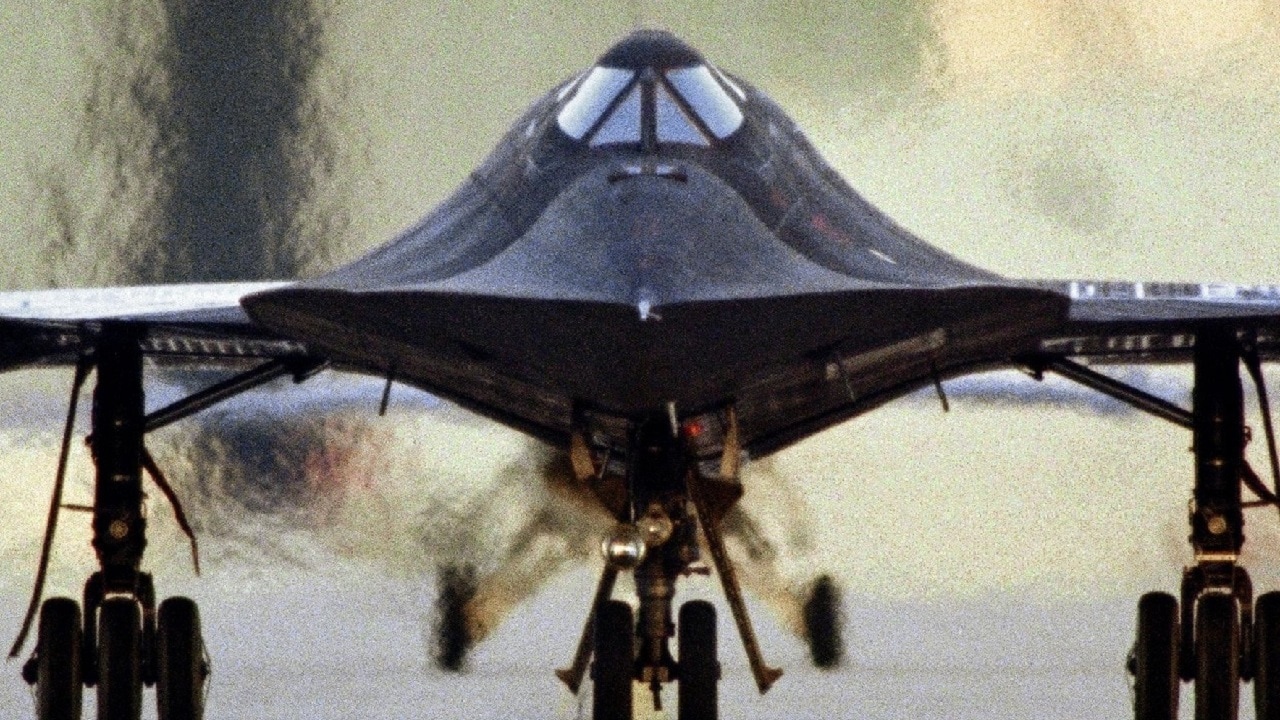The U.S. Air Force’s SR-71 remains one of the most revered airframes in American history.
Able to operate at high speeds of Mach 3.2 and high altitudes of 85,000 feet, this plane was truly unmatched in capability. Aviation buffs and industry experts estimate that the SR-71 out-flew more than 4,000 missiles during its several decades in service.
While the “Blackbird’s” ability to evade missiles gives it a legendary status, the airframe was still subject to loads of projectile barrages. However, no SR-71 was ever taken out by enemy fire.
The story
In an interview with Air and Space Magazine in 2014, Blackbird RSO Major Jerry Crew recounted the moment a Blackbird airframe was targeted by a surface-to-air missile (SAM).
During an average day during a detachment on Okinawa in 1968, Crew and Major Tony Bevacqua piloted an operational sortie over North Vietnam. The pilots traveled over Hanoi and Haiphong, understanding the significance that current intelligence played in the ongoing war.
As dictated by Crew, “Turning inbound on our first sensor run, I noticed the “R” light on my electronic countermeasures (ECM) panel was illuminated. A North Vietnamese SAM site was tracking us on its radar. What we didn’t expect was the illumination of the “M” light, followed closely by the “L” light! This meant that the North Vietnamese had actually fired one or more SAMs at us. (The “R” light meant they were searching for you, the “M” light meant they were tracking you, and the “L” light meant they were launching at you.) Attempting to seem calm (I failed), I told Tony we had just had a SAM shot at us.”
Notably, Crew remembers him and Bevacqua fixating on the time, since the pair were told that an SA-2 missile’s total flight time was roughly 58 seconds. Due to this fact, the pilots knew that if nothing occurred during this timespan, they were likely in the clear. Ultimately, more than 58 seconds passed and the pilots were assured of their safety. Footage confirmed that the North Vietnamese shot two missiles at the Blackbird, but missed the target.
Introducing the SR-71 Blackbird
The legendary SR-71 Blackbird can be linked back to Lockheed Martin’s Skunk Works in the 1950’s, when the team developed the U-2 spy plane. Although the high-flying reconnaissance airframe did not live up to expectations, the plan inspired the team to design the Blackbird. The robust airframe was engineered to fly faster than 2,000 miles per hour in order to successfully evade anti-aircraft fire and remain as undetectable as possible.
The powerful plane was powered by two Pratt & Whitney J58 bleed-bypass turbojets, which helped the Blackbird fly at speeds around Mach 3.2. Interestingly, the Blackbird’s exterior was designed with titanium. However, during the Cold War the U.S. had short supplies of metal. As a result, the titanium used to make up the SR-71 was actually sourced from the Soviet Union.
During its 25-years in service, the Blackbird flew in Vietnam, in the Yom Kippur War, the Israeli invasion of Lebanon and U.S. air raids in Libya. While the Blackbird has been relegated to museum duty since its retirement from service, the airframe lives on in history books as a truly unparalleled platform.
Maya Carlin, a Senior Editor for 19FortyFive, is an analyst with the Center for Security Policy and a former Anna Sobol Levy Fellow at IDC Herzliya in Israel. She has by-lines in many publications, including The National Interest, Jerusalem Post, and Times of Israel. You can follow her on Twitter: @MayaCarlin.
From 19FortyFive
Ukraine Footage Shows U.S. M982 ‘Excalibur’ Cut Through Russian Artillery
How To Sink A $3 Billion Dollar Submarine: Leave A Hatch Open
Smashed To Pieces: Video Shows Ukraine Hitting Russian Air Defenses

